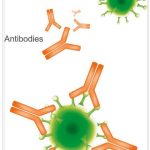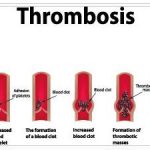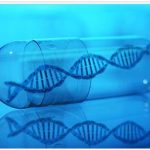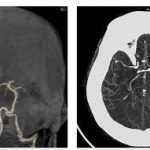Phelan -McDermid Syndrome is a genetic developmental disorder. It results in neuromuscular symptoms and severe intellectual disability.
What is Phelan-McDermid Syndrome?
In medicine, Phelan-McDermid syndrome (PMS) is also known as microdeletion 22q13.3 or 22q13.3 deletion syndrome. What is meant by this is a genetically caused developmental disorder that is associated with intellectual disability, neuromuscular disorders and a lack of language development. See electronicsencyclopedia for Slang Meckel Diverticulum.
Responsible for the disorder is a microdeletion on chromosome 22, on the long arm of which a segment is missing. Phelan-McDermid syndrome is one of the very rare diseases. The developmental disorder has only been identified about a thousand times around the world. However, doctors assume that the number is too low because the majority of all patients suffer from autism spectrum disorders.
However, not all cases of PMS are associated with autism, so epidemiological estimates are considered rather inaccurate. The syndrome manifests itself in childhood. Phelan-McDermid syndrome was named after researchers K. Phelan and H. McDermid, who characterized the syndrome more phenotypically. The developmental disorder was first described in 1985 as partial monosomy 22q.
Causes
The loss of genetic material of chromosome 22 is responsible for Phelan-McDermid syndrome. The affected persons are missing a segment at the end of the long chromosome arm. There are three possible causes for this genetic disorder. These include the simple deletion, where part of chromosome 22 breaks off when a sperm cell or egg cell is formed.
Ring chromosome formation is also possible, in which both ends of chromosome 22 are broken off. The open ends then connect to form a chromosome that has the shape of a ring. The third possible cause is unbalanced translocations. Part of chromosome 22 is lost.
The segment of another chromosome then steps in as a replacement. The PROSAP2/SHANK 3 gene is located in the missing segment of chromosome 22. It is assumed that the absence of this gene is responsible for the neurological symptoms of Phelan-McDermid syndrome. Observations made in recent years suggest this. In almost all cases described, a copy of the Shank3 gene is missing.
Symptoms, Ailments & Signs
The symptoms that occur as a result of Phelan-McDermid syndrome are diverse and vary from person to person. However, almost all patients have a global developmental disorder. This leads to severe intellectual disabilities and pronounced muscle hypotonia. Language development also suffers from the syndrome.
The psychiatric component is regarded as inconsistent. Early childhood autism or autism spectrum disorders can be identified in around 80 percent of all affected children. Some people who have a mutation in the Shank3 gene or a 22q13.3 microdeletion develop schizophrenia or bipolar disorder in adolescence or adulthood.
The speech disorder shows up very early on in those affected. So the sounds only come about with a delay or are completely absent. In some cases, the children are quite capable of uttering a few words or even single sentences at first. However, as they get older, they tend to lose this ability.
Other typical features of Phelan-McDermid syndrome are a tendency to infections and increased pain tolerance. The first symptom of the syndrome in babies is muscular hypotonia. It is not uncommon for minor deformities to appear on the face and limbs. Furthermore, malformations inside the body such as the [[kidneys, the urinary tract or the heart are possible.
For this reason, appropriate control examinations should be carried out. Epileptic seizures occur in around 25 percent of all children suffering from Phelan-McDermid syndrome. These can be associated with brain abnormalities such as arachnoid cysts. Disorders of internal or endocrine organs such as autoimmune hepatitis are rare.
The intellectual disabilities that result from Phelan-McDermid Syndrome also affect the behavior of affected children. They lack social reciprocity and eye contact. In addition, many children do not have a two-phase sleep-wake cycle.
Diagnosis & course of disease
A blood test is usually used to diagnose Phelan-McDermid syndrome. This involves a special test called a CGH array. CGH stands for Comparative Genomic Hybridization. With the help of this CGH test, it is possible to detect chromosome changes, even if they are so small that they can no longer be detected in a normal chromosome analysis.
Furthermore, PMS can also be detected during pregnancy tests such as an amniocentesis. The prognosis for Phelan-McDermid syndrome is negative because the developmental disorder cannot be cured. However, the life expectancy of the patients usually does not suffer. It depends on the patient’s care and the extent of his or her disabilities.
Complications
Due to the Phelan-McDermid syndrome, those affected suffer from a significantly delayed development and also from various disorders in growth. As a rule, this also leads to considerable mental and motor disabilities and limitations. In many cases, with Phelan-McDermid syndrome, the patient’s relatives and parents also suffer from the psychological symptoms and also from depression, so that the quality of life of the entire family is significantly reduced.
Likewise, in Phelan-McDermid syndrome there is muscle atrophy and psychological limitations, so that the children are schizophrenic or suffer from a bipolar disorder. The ability to speak is also significantly restricted by the syndrome, so that there are problems with communication. Furthermore, in many cases of this syndrome, there are also malformations of the kidneys or the heart, which may reduce the life expectancy of the patient.
This leads to epileptic seizures and various skin disorders. Unfortunately, Phelan-McDermid syndrome cannot be treated causally. For this reason, treatment is geared primarily to the symptoms of this syndrome. There are no particular complications, but not all symptoms can be reduced. Phelan-McDermid syndrome may also reduce the life expectancy of those affected.
When should you go to the doctor?
Since Phelan-McDermid syndrome is a serious genetic disorder, it must always be examined and treated by a doctor. The symptoms can only be reduced by medical treatment. However, a complete cure is not possible, so that the affected person suffers from the symptoms of this syndrome throughout his life.
A doctor should be consulted for Phelan-McDermid syndrome if the patient suffers from muscle problems and especially severe muscle pain. The condition can lead to intellectual disabilities or bipolar disorder. Should these symptoms also occur, the patient should undergo medical treatment in order to avoid further complications. Early treatment can significantly reduce mental retardation.
Regular examinations of the organs are also useful, since the heart and kidneys are also affected by the disease. In the event of an epileptic seizure, call an ambulance or go to a hospital immediately. Since the parents and relatives often suffer from psychological problems as a result of Phelan-McDermid syndrome, psychological support is very useful.
Treatment & Therapy
There is no treatment for the causes of Phelan-McDermid Syndrome. Therefore, symptomatic therapy takes place. The promotion of cognitive, motor, linguistic and social factors plays an important role in order to improve the quality of life of those affected.
Also important is the treatment of side effects such as swallowing and sucking disorders, reflux or vomiting, which occur in early childhood due to muscular hypotonia. Physiotherapeutic treatments, the use of voice output computers or occupational therapy can be considered as further measures for early support.
Outlook & Forecast
The prognosis for Phelan-McDermid syndrome is poor on the one hand and good on the other. The disease is not curable. However, it often does not limit the life expectancy of those affected.
However, if the degree of disability caused by Phelan-McDermid syndrome is higher and medical and psychosocial care remains inadequate, the prognosis can be significantly worse. The sooner the affected children are encouraged in their mental or motor development, the better the prognosis. In addition, however, only symptomatic treatment of those affected can take place.
Neurological or psychiatric abnormalities such as depression, schizophrenia or bipolar disorders can occur in the course of Phelan-McDermid syndrome. These sequelae can be treated according to proven medical standards. However, concomitant drug treatments do not work as well in these patients as in others.
The prognosis is worsened if there is a lack of support, insufficient medical care, a lack of recognition in the social sphere, and concomitant epilepsy or skin symptoms. Medical complications can also occur. For example, Phelan-McDermid syndrome can lead to malformations in important organs or muscle atrophy. The heart or kidneys are often affected by such malformations. Such sequelae can adversely affect the quality of life and lifespan of those affected. In this case, the medical prognosis can be better than the self-assessment of those affected.
Prevention
Phelan-McDermid Syndrome is congenital. Therefore, no preventive measures are possible.
Aftercare
In most cases, those affected with Phelan-McDermid syndrome have either no or only very limited follow-up care available. People affected by this disease should see a doctor early on, as it cannot heal on its own. Early diagnosis of the disease can therefore prevent further complications and symptoms.
If you wish to have children, a genetic examination and counseling should always be carried out first, so that the syndrome cannot appear again in the descendants, since this is a genetic disease. The affected person should consult a doctor at the first signs and symptoms of the disease.
Most patients with Phelan-McDermid syndrome are dependent on physical therapy or physiotherapy. Many of the exercises from such therapies can also be performed at home, which may speed up healing.
The affected children also depend on the intensive care and support of their own families so that the symptoms can be alleviated and the child can develop. As a rule, no general statement can be made about the further course and the prediction of the life expectancy of the disease.
You can do that yourself
The primary goal of therapy for Phelan-Mc-Dermid syndrome is early support for the sick child. The most important measure is to specifically promote the patient’s social, motor, language and cognitive abilities. This requires sports, physical therapy, mental training and a number of other measures.
Parents should get in touch with the responsible doctors at an early stage so that a treatment concept can be drawn up that takes into account the complex symptoms of Phelan-Mc-Dermid syndrome. In addition, adjustments must be made in everyday life. The sick children are usually not able to move around without help and accordingly need outpatient care. Stairs suitable for the disabled must be installed in the household and further changes must be made depending on the symptoms. In addition, the child usually needs a wheelchair. Above all, insurance-related questions need to be clarified here, with the responsible doctor also providing support in this aspect.
The parents of the affected children are usually exposed to a lot of stress. This makes it all the more important to have discussions with other people affected and, if necessary, with a therapist. General measures such as sport, relaxation exercises and a balanced diet help to reduce stress.








